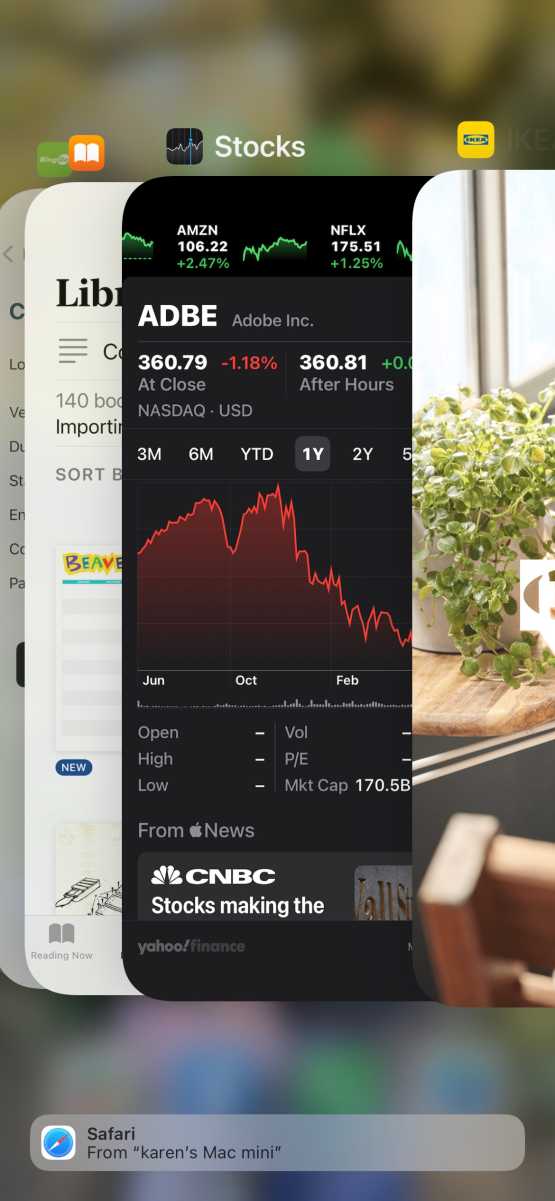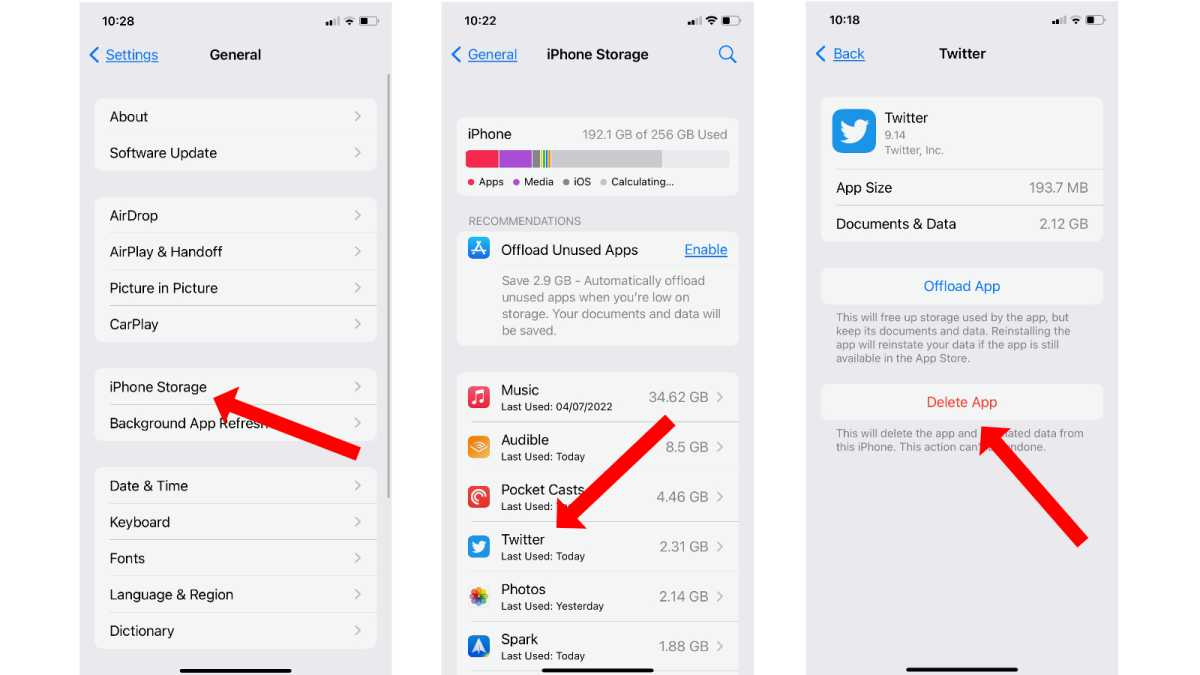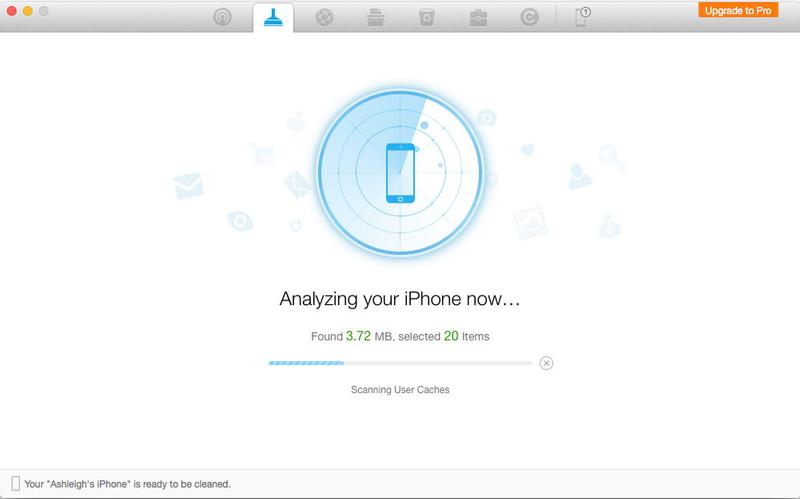How to clear your iPhone’s cache and get a speed boost
Over time, iPhones and iPads tend to slow down as they get clogged up with unwanted files and apps. You can give your device a little speed boost by clearing out the junk and memory-clogging files on your device. In this article we explain how to clean out the cache, which should get your iPhone or iPad running faster once more.
What is cache?
Pronounced ‘cash’, this is an area of memory on your device where small, temporary files are kept. These are often useful and intended to speed up performance by allowing the CPU to access regularly used files quickly. The most common use in on websites, where the cache will usually store product images, javascript settings and other relevant things that keep things ticking along nicely when you’re browsing. The problem is when the cache it filled up with lots of these files that you no longer need. It takes the device longer to find necessary files, slowing things down in the process. So, it’s a good idea to clear this out periodically to ensure your iPhone or iPad stay in tip-top shape.
One thing you may notice is the first time you visit a website after clearing the cache, things take slightly longer to load up or you may even have to log in once more. But, those items will then be stored in the cache until you need them again (or until you clear your cache again).
Free up memory by restarting an iPhone or iPad
Before you start deleting things from your iPhone or iPad, it’s worth taking the classic step of turning it off and on again. For the most part, iOS does a good job of managing memory without any user involvement. But we do find that restarting an iPhone from time to time is a good way to clear out the memory and ensure important apps have enough to run happily.
The process for restarting your iPhone depends on the age of your iPhone or iPad. If you have an iPhone or iPad with a Home button you’ll use one method. If your iPhone or iPad uses Face ID you will have no Home button, in which case you will need a different method.
With no Home button:
- Press the volume up button.
- Press the volume down button.
- Press the Power button.
- Swipe to turn your iPhone off.
- Your iPhone will shut down. Once it has just press and hold the power button until you see the Apple logo appear, then wait for the device to reboot fully.
With some older iPhone models you may be able to hold down the power button and the volume up button at the same time until you see the “slide to power off” option appear.
With a Home button
- On an iPhone or iPad with a Home button (SE and suchlike) you’ll need to hold down only the power button until the slider appears.
- Your iPhone or iPad will then power down.
- Just press the power button to get things going once more.
Doing this on a regular basis used to be vital on an iPhone, but is less so these days. Nevertheless, it can still be useful on older models.
How to clear the cache on an iPhone or iPad
As we said above one of the biggest problems can be browser cache. Luckily, deleting the cache in Safari is simple.
- Open Settings, scroll down until you find Safari, then select it to open the next menu.
- Scroll down and tap ‘Clear History and Website Data’.
- In the popup, tap ‘Clear History and Data’ to confirm.
Foundry / IDG
Note that this will log you out of any websites you’ve currently signed into, so make sure you know your passwords.
How to close apps to free up RAM
There was a time when force quitting an app was considered a great way to free up RAM on your iPhone or iPad. This may still be helpful, but it’s no longer recommended that you close background apps. However if you want to try it, as it may help if a particular app is causing your device to slow down here’s what to do:
- Swipe up from the bottom of the device screen and then let go when the pages you have open appear in a shuffle.
- Find the app you want to close and swipe up on it.
- You can select more than one app if you use more than one finger.

How to delete unwanted app data
Data stored by other apps can be cleaned out using the Usage option in Settings.
- Tap Settings > General > iPhone Storage. (On an iPad this option will be labelled iPad Storage.)
- At the bottom of the screen (below recommendations for ways to save space) you’ll see your apps, arranged by the amount of storage they take up. Tap an app that’s taking up a lot of space.
- Check the figure for Documents & Data. This includes related media such as pictures, songs and podcasts, save games and preferences; in some cases it can be considerably larger than the app itself.
- If the Documents & Data figure is taking up more room than you’d like or you simply don’t use that app anymore, you can delete the app and its files by tapping the Delete App option.
- Once this is done, you can head to the App Store and re-download it. This clean install won’t include the data and documents and will therefore be smaller.

Foundry / IDG
How to offload unwanted apps
As well as deleting apps and their data, another option is to make use of the Offload apps feature in iOS and iPadOS. This is different to deleting them as offloading means that the related data is stored on your phone, but the app itself is deleted. This is only really useful in terms of things like games where the app sizes can be quite large when compared to their save files, but it’s a route you can take if space is at a premium.
To offload an app, follow the steps above for deleting apps but select Offload App instead. You can always download it later if you need it again.
Best iPhone cleaner apps
There are plenty of apps out there that do a quick and efficient job of getting rid of files you don’t need. These are normally downloaded to your Mac or PC; you then connect your iPhone (or iPad) and let the app do its thing. Most offer a free trial, but to use the full range of features you’ll normally need to cough up for a subscription. Still, $20/£20 is much cheaper than having to replace an entire device, so it’s probably worth the outlay.
PhoneClean
PhoneClean by iMobie can be used to remove junk files from iOS. Follow these steps:
- Plug the iPhone into your Mac.
- Open PhoneClean and click Scan.
- Once the scan is complete, click Clean.
Some PhoneClean features, including Photo Caches, are only available in the
Pro version. This starts at $19.99 (around £16), for a single Mac or PC for one year.

Smart Cleaner
If you prefer to keep things on your phone rather than hooking it up to a PC or Mac, then Smart Cleaner by BP Mobile is a good choice. This iOS/iPadOS app can help clear out the clutter on your device by removing duplicate photos, contacts and other ephemera that you have accumulated. The interface is well laid out, with simple one-touch options to let the app do its thing. There’s also a helpful guide included that tells you have to clear things up manually on your device if there’s something that the app can’t do.

Foundry / IDG
Smart Cleaner comes with a 3-day free trial, but if you want to buy the app outright then it will set you back $34.99/£34.99.
Further reading
That’s all for today, but we hope the tips above help you to improve your device’s performance. For more general iOS speed tips, it would be worth taking a look at our broader tutorials:
How to speed up a slow iPhone and
How to speed up a slow iPad.
At some point you may wish to bite the bullet and buy a new device. You can do this
direct from Apple, but we’d recommend taking the time to read some advice first; our
iPhone buying guide and
iPad buying guide should be your first ports of call.
For all the latest Technology News Click Here
For the latest news and updates, follow us on Google News.
